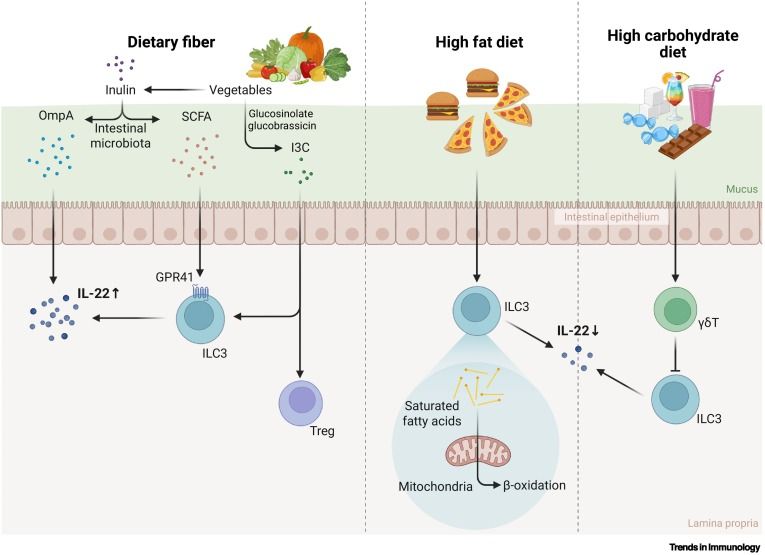
Cell intrinsic versus cell extrinsic control of plasma cell longevity #immunology
24.11.2025 18:16 — 👍 1 🔁 0 💬 0 📌 0@cp-trendsimmuno.bsky.social
Cell Press Reviews journal covering Immunology. Posts by Editor-in-Chief, Claudia Burrello.

Cell intrinsic versus cell extrinsic control of plasma cell longevity #immunology
24.11.2025 18:16 — 👍 1 🔁 0 💬 0 📌 0Excited to share this highlight of a beautiful study into how myeloperoxidase acts as a chromatin transformer
20.11.2025 14:45 — 👍 6 🔁 3 💬 0 📌 0
New review out in @cp-trendsimmuno.bsky.social! With @valentinavenzin.bsky.social, we revisit IL-27 as a central regulator of CD8⁺ T cell fate — integrating insights from infection, cancer, and autoimmunity, and outlining its therapeutic potential. www.sciencedirect.com/science/arti...
20.11.2025 06:24 — 👍 6 🔁 3 💬 0 📌 0
Beyond the innate immune system: rethinking inflammasomes in multiple sclerosis #immunology
20.11.2025 06:14 — 👍 2 🔁 0 💬 0 📌 0
Reframing IL-27: a central regulator of CD8+ T cell immunity #immunology
20.11.2025 06:14 — 👍 5 🔁 0 💬 0 📌 1
Interleukin-22: the hub bridging gut homeostasis and metabolism #immunology
20.11.2025 00:14 — 👍 2 🔁 0 💬 0 📌 0
Myeloperoxidase transforms chromatin into an immune weapon #immunology
17.11.2025 06:15 — 👍 3 🔁 0 💬 0 📌 1Our November issue is online! Check it out 👉https://www.cell.com/issue/S1471-4906(24)X0012-5
13.11.2025 14:57 — 👍 0 🔁 0 💬 0 📌 0#ToPrimeOrNotToPrime, this is the question! Excited for our new review @cp-trendsimmuno.bsky.social with @oceanedufies.bsky.social in which we discuss what is “priming” for the #NLRP3 #inflammasome & how we can harness this knowledge to better control human diseases! #InflammasomePower! #Free 👇👇👇
10.11.2025 17:26 — 👍 16 🔁 9 💬 2 📌 0Thank you for your contribution, Ivan. It was great working with you!✨
13.11.2025 14:54 — 👍 1 🔁 1 💬 1 📌 0
Submit your abstract
Are you working on research that challenges the classical function of the immune system? Submit an abstract to @CellSymposia #CSImmuneHomeostasis26 and be considered for a poster or short talk at the meeting in Shanghai, China, May 11–13, 2026 http://dlvr.it/TPFG1G
13.11.2025 12:48 — 👍 0 🔁 0 💬 0 📌 0
Post-translational modifications of NLRP3: to prime or not to prime? #immunology
10.11.2025 18:18 — 👍 1 🔁 0 💬 0 📌 0
Epigenetically programmed identity crisis to combat diffuse large B cell lymphoma #immunology
07.11.2025 18:17 — 👍 3 🔁 1 💬 0 📌 0
DNA methylation and histone modifications drive the trained immunity duration #immunology
06.11.2025 12:17 — 👍 0 🔁 0 💬 0 📌 0
Neuroimmune dynamics and cytokines in traumatic brain injury #immunology
22.10.2025 11:15 — 👍 1 🔁 0 💬 0 📌 0
Dual effects and balanced regulation of cytokines in sepsis #immunology
21.10.2025 23:15 — 👍 3 🔁 1 💬 0 📌 0
Cell Symposia: Immune regulation of organismal homeostasis: Keeping the middle path
We’re excited to bring you a fresh perspective on the multifaceted role of the immune system at @CellSymposia #CSImmuneHomeostasis26, taking place May 11–13, 2026 in Shanghai, China. Discover more: http://dlvr.it/TNn8c3
20.10.2025 15:01 — 👍 0 🔁 0 💬 0 📌 0🚨 The October issue of Trends in Immunology is live! 🚨
On the cover: T cells transferring membrane proteins like athletes exchanging the baton in a relay run. 🏃🏃♂️
🔗Link to the full issue: www.cell.com/issue/S1471-...
#immunology #Tcells #research #trendsinimmunology

In "News from the T cell trogocytosis front" (10.1016/j.it.2025.07.008), we explore the T cell trogocytosis, a form of horizontal protein transfer where T cells “hand off” molecules to each other, much like runners passing a baton in a relay race.
@cp-trendsimmuno.bsky.social

Tile reading "The Nobel Prize in Physiology or Medicine: Read our related articles" Cell Press braned with a NObel Prize medal diplayed on the right hand side.
Congratulations to the 2025 #NobelPrize in Physiology or Medicine winners Drs. Mary Brunkow, Fred Ramsdell, & Shimon Sakaguchi for their discoveries concerning peripheral immune tolerance.
View their related research published in #CellPress journals: spkl.io/63325AVK2R

🎉 Congratulations to #Nobel Prize awardees Mary Brunkow, Fred Ramsdell, and Shimon Sakaguchi for their groundbreaking discoveries about peripheral immune tolerance and #tregs
Trends in Immunology had the privilege of featuring their influential research over the years.👉 www.cell.com/trends/immun...

🎉 Congratulations to #Nobel Prize awardees Mary Brunkow, Fred Ramsdell, and Shimon Sakaguchi for their groundbreaking discoveries about peripheral immune tolerance and #tregs
Trends in Immunology had the privilege of featuring their influential research over the years.👉 www.cell.com/trends/immun...

🎉 Congratulations to #Nobel Prize awardees Mary Brunkow, Fred Ramsdell, and Shimon Sakaguchi for their groundbreaking discoveries about peripheral immune tolerance and #tregs
Trends in Immunology had the privilege of featuring their influential research over the years.👉
www.cell.com/immunology/f...